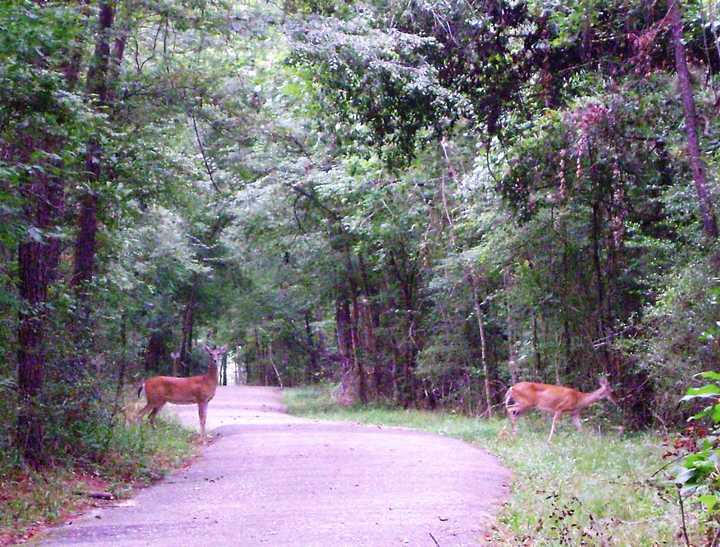But add to these inconveniences deer-mating season, or rutting, and it's a trifecta of dangerous driving conditions.
During deer-rutting season, bucks are actively pursuing does. "Deer are definitely 'on the move' more than usual during the rut," said Laura a field director for urban wildlife at the Humane Society of the United States. The rut, she said, also coincides with hunting season, which means deer are fleeing hunters as well.
White-tailed deer, members of the Cervidae family that calls Fairfield County home, have adapted well to suburban life, which accounts for an uptick in their population, estimated by experts to be 30 million throughout the country.
Mating season, said Simon, means that those "Watch for Deer" road signs aren't only applicable at dusk and dawn. Additionally, she said, deer are herd animals.
While deer-related crashes are generally catastrophic for the animals, they also are costly to automobile owners. The Insurance Institute for Highway Safety estimates that 1.6 million deer-motor vehicle crashes occur each year nationally. Such collisions cause more than $3.6 billion in vehicle damage per year.
There were more than 10,000 deer-related vehicular incidents on the roadways of Connecticut in 2011, according to Andrew LaBonte, a wildlife biologist at the Connecticut Department of Environmental Protection.
Connecticut’s AAA Foundation for Automotive Safety has these tips for head's up driving during deer-mating season:
- Decrease speed. It gives you more time to react.
- Look for deer-crossing signs that indicate areas where deer frequently travel. Deer are creatures of habit and often use the same path again, so remember where you see them.
- Be alert: A deer standing near a roadside may suddenly run across the road. Slow down and use your horn to scare the deer. Never shine or flash your vehicle's lights. This can cause the deer to fixate on your vehicle. Use high beams for greater visibility.
- Don't swerve: It can cause you to lose control of your vehicle and strike another vehicle or object along the roadway.
- Do not rely on devices: There is no conclusive evidence that hood-mounted deer whistles and other such devices work.
- Slow down: If a crash with a deer is unavoidable, release your foot from the brake before impact. This will raise the front end of the car during the crash and increase the likelihood that the animal will go underneath the vehicle instead of through the windshield.
One more animal to keep in mind on your ride home: Moose are now migrating farther and farther south and their populations are growing, particularly in Litchfield and northern Fairfield counties. While not as plentiful on and near roadways – yet – they are equally if not more dangerous than deer, given their size. But for now, slow down for deer in love.
Click here to follow Daily Voice Norwalk and receive free news updates.
